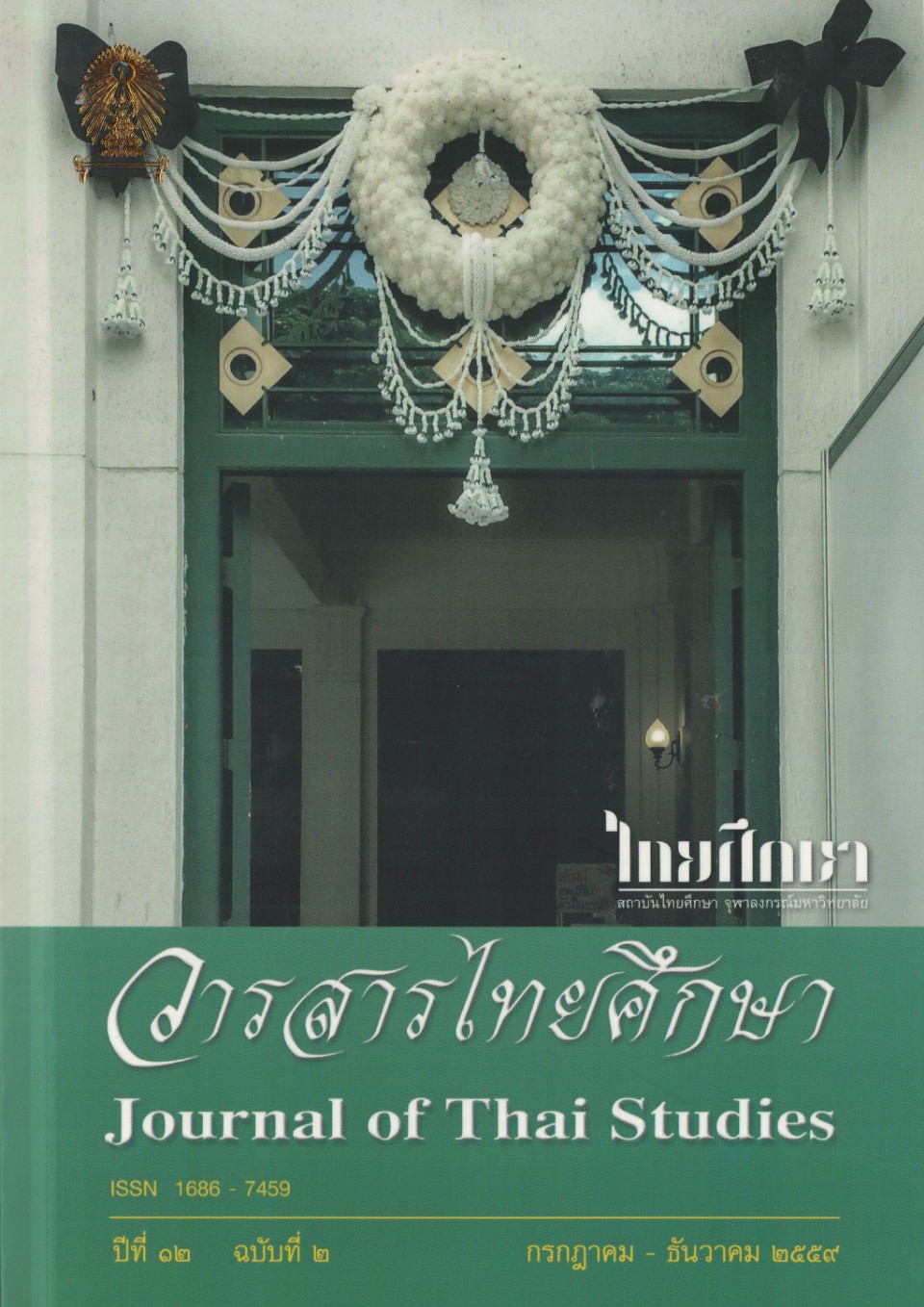“Buddha Avatar” and the “Dasaratha Jataka”: Buddhism in Hinduism and Hinduism in Buddhism
Main Article Content
Abstract
The purpose of this research is to examine the narratives that portray the Buddha as an avatar of Narayana (Vishnu) (also known as the Buddha Avatar) and the narratives that portray Phra Ram as a Bodhisattva. The texts chosen for analysis include Lilit Narai Sip Pang, the Verse of Shiva Pratima, and the Dasaratha Jataka. The analysis, on the one hand, reveals that the narratives that portray the Buddha as an avatar of Narayana (Vishnu) are not widely accepted in the context of Thai Buddhism. Among various versions of Narai Sip Pang, the Buddha Avatar only appears in Lilit Narai Sip Pang and no further details are given. This concept of the Buddha Avatar is also found in the Verse of Shiva Pratima, but it appears only in the form of a counter-narrative to the belief that the Buddha is really an avatar of Narayana (Vishnu). On the other hand, the narratives that portray Phra Ram as a Bodhisattva are more generally accepted in the religious context of Thai society. It is also found that in the Dasaratha Jataka, Phra Ram, one of the Hindu deities, was revised to be recognized as the Buddha in one of his previous lives. The narratives gradually were changed to adapted Phra Ram to conform to Buddhist beliefs.
Downloads
Article Details

This work is licensed under a Creative Commons Attribution-NonCommercial-NoDerivatives 4.0 International License.
Journal of Thai studies is licensed under a Creative Commons Attribution-Noncommercial-NoDerivatives4.0 Intenational (CC BY-NC-ND 4.0) licence, unless otherwise stated. Plese read our Policies page for more information on Open Access, copyright and permissions.
References
ดำรงราชานุภาพ, สมเด็จพระเจ้าบรมวงศ์เธอ กรมพระยา. นิทานโบราณคดี. กรุงเทพฯ: ดอกหญ้า, ๒๕๔๖.
ตำราภาพเทวรูปและเทวดานพเคราะห์. กรุงเทพมหานคร: กรมศิลปากร, ๒๕๓๕.
ปรมานุชิตชิโนรส, สมเด็จพระมหาสมณเจ้า กรมพระ. พระปฐมสมโพธิกถา. พระนคร: ธรรมบรรณาคาร, ๒๕๑๗.
พระคัมภีร์ชาดกแปลฉบับ ส.อ.ส., เล่ม ๑๑. กาญจนบุรี: สหายการพิมพ์, ๒๕๓๙.
มงกุฎเกล้าเจ้าอยู่หัว, พระบาทสมเด็จพระ. ลิลิตนารายณ์สิบปาง.กรุงเทพ: มิตรสยาม, ๒๕๑๔.
วิสุทธิ์ บุษยกุล. วิสุทธิ์นิพนธ์. กรุงเทพฯ: โอเดียนสโตร์, ๒๕๒๐.
ศิราพร ฐิตะฐาน ณ ถลาง. ในท้องถิ่นมีนิทานและการละเล่น: การศึกษาคติชนในปริบททางสังคมไทย. (กรุงเทพฯ: สำนักพิมพ์มติชน, ๒๕๓๗.
ศักดิ์ศรี แย้มนัดดา. ศักดิ์ศรีนิพนธ์. กรุงเทพฯ: โอเดียนสโตร์, ๒๕๑๗.
_________. วรรณคดีพุทธศาสนาพากย์ไทย. กรุงเทพฯ: คณะอักษรศาสตร์ จุฬาลงกรณ์มหาวิทยาลัย, ๒๕๔๓.
อภิลักษณ์ เกษมผลกูล. “เมื่อพระอิศวรชวนพระพุทธเจ้าซ่อนหา” ต้นเค้าและปริศนาธรรมจากวรรณกรรมที่ปรากฏอนุภาคซ่อนหาระหว่างพระอิศวรกับพระพุทธเจ้า. The Journal ๑, ๒ (July ๒๐๐๕): ๑๕-๓๔.
อรุณศักดิ์ กิ่งมณี. เทพฮินดูผู้พิทักษ์พุทธสถาน. กรุงเทพฯ: มิวเซียมเพรส, ๒๕๕๑.
อุปกิตศิลปสาร (นิ่ม กาญจนชีวะ), พระยา. คำประพันธ์บางเรื่อง. กรุงเทพฯ: ไทยวัฒนาพานิช, ๒๕๒๔.
Joshi, L. Studies in the Buddhistic culture in India. New Dehli: Shri Jainendra, 1967.
Shastri,J. L. (Ed.). Ancient Indian Tradition and Mythology: The Bhagavata Purana, Vol. 7, Vol. 11. Dehli: Motilal Banarsidass, 1999.
Wilkins, W. J. Hindu Gods and Goddess. New York: Dover, 2003.


